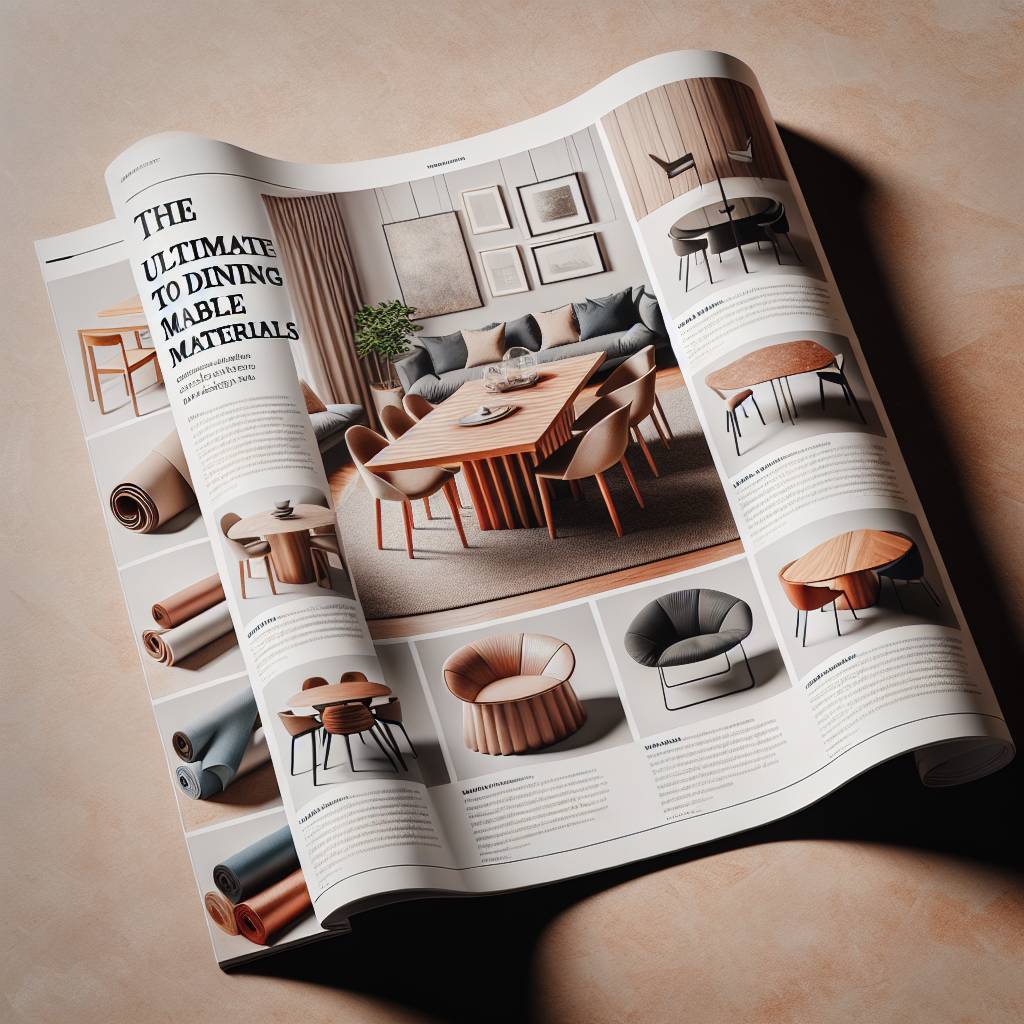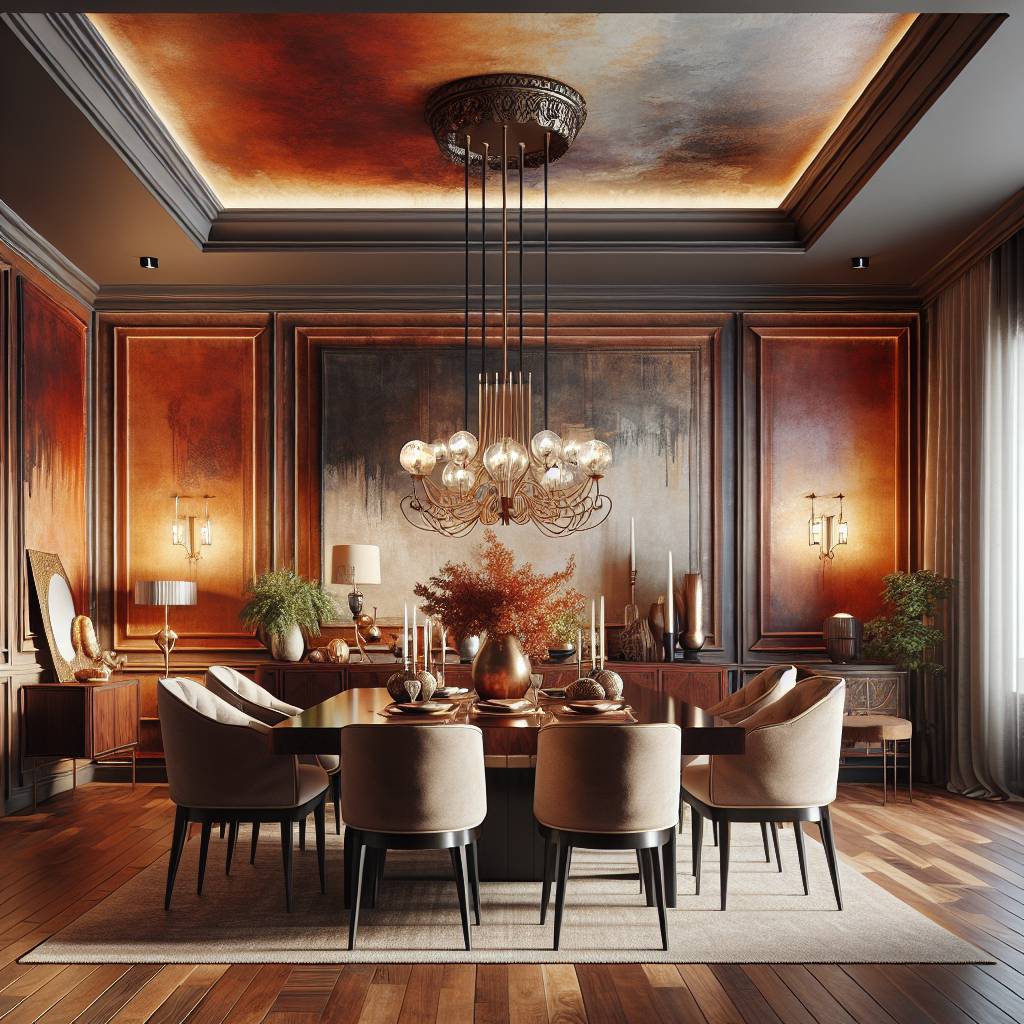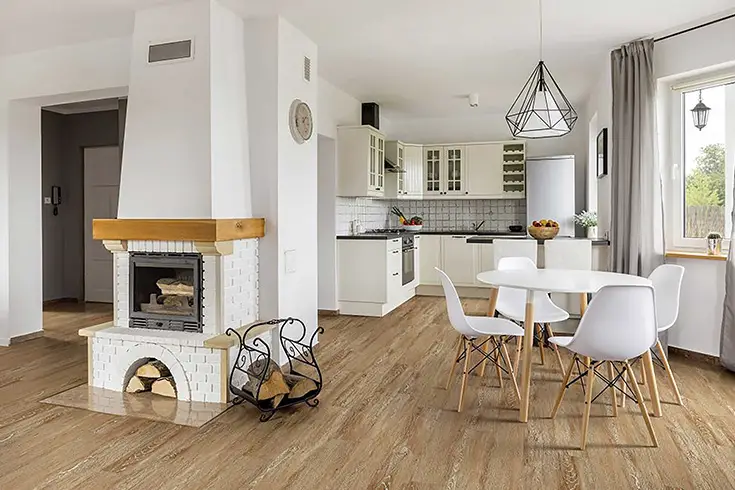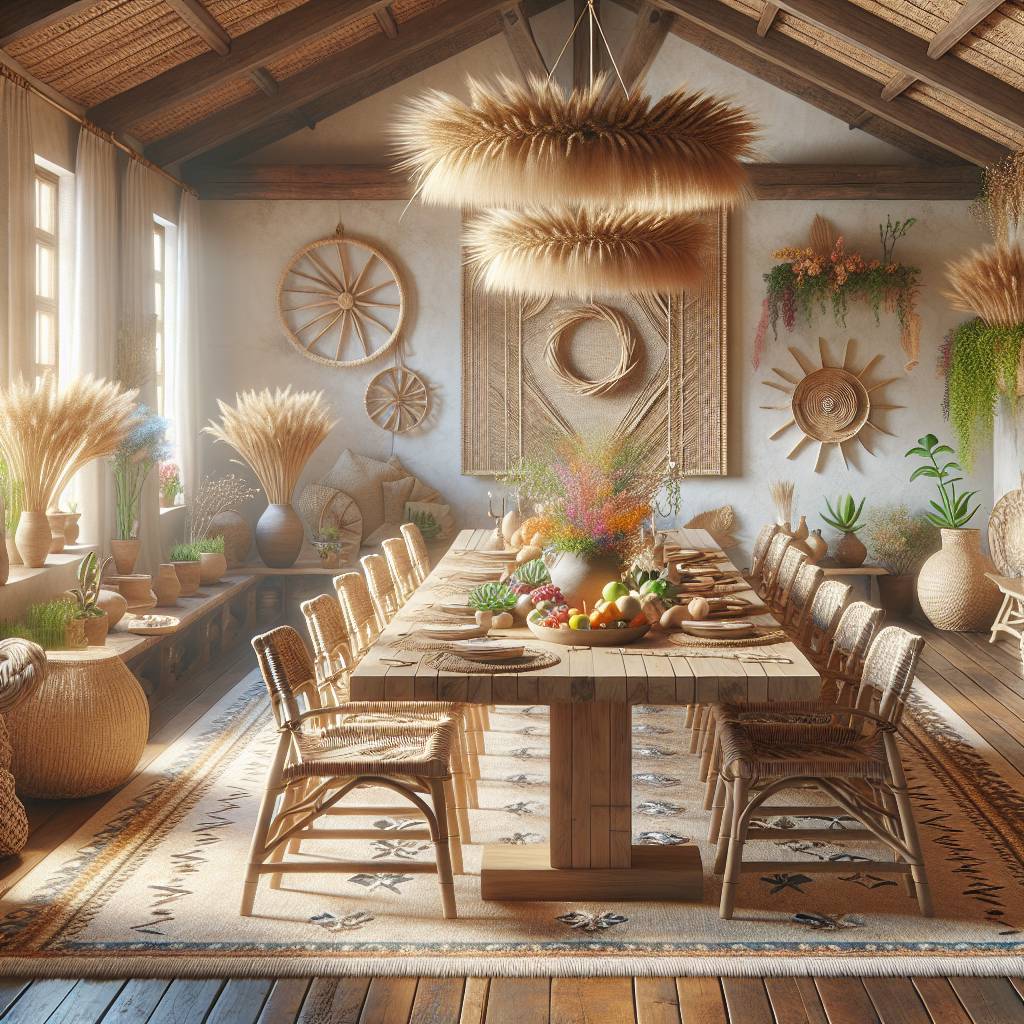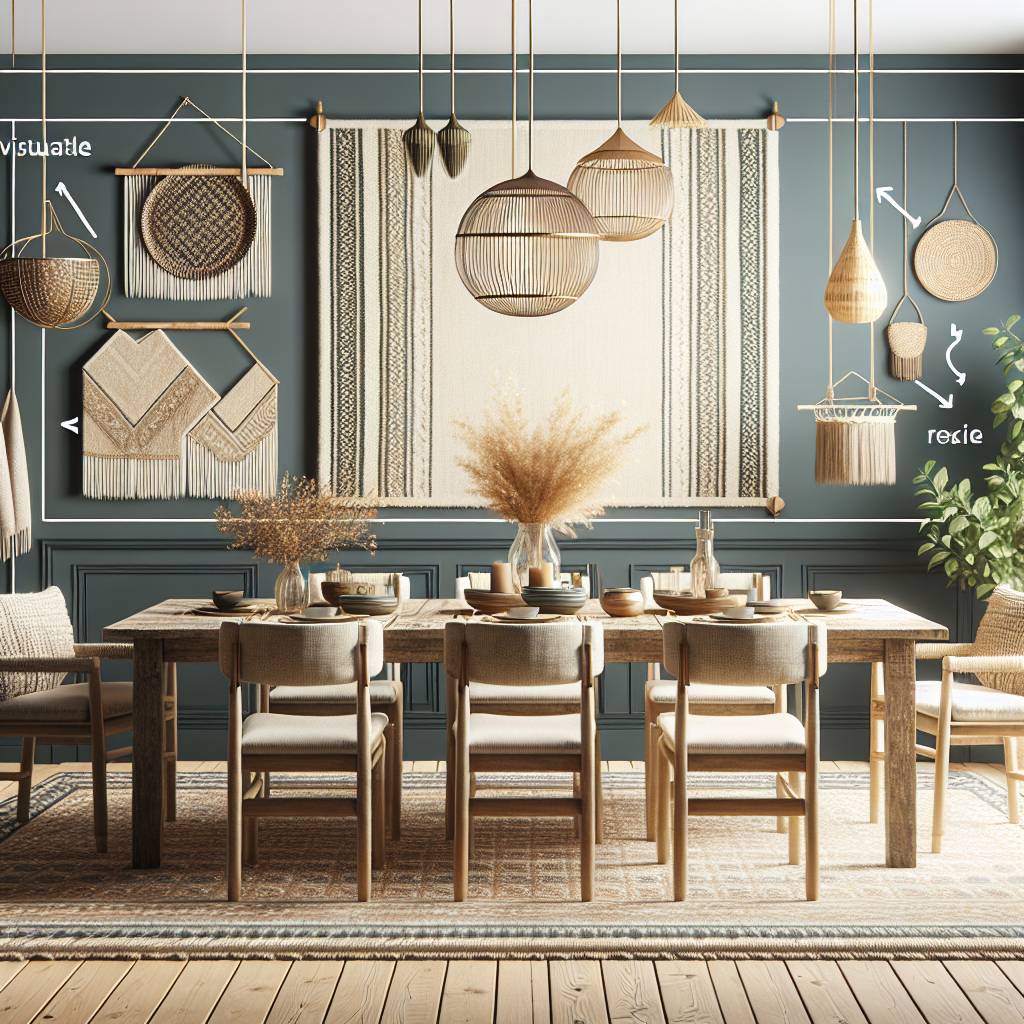Ever wondered about the perfect material for your dining table? Choosing the right one can be overwhelming with so many options available. From classic wood to modern glass, each material offers a unique blend of style and functionality. In this comprehensive guide, we’ll walk you through different options and types of dining table materials. Whether you’re looking for durability, aesthetics, or ease of maintenance, we’ve got you covered.
From the timeless elegance of hardwood to the sleek allure of metal and marble, there’s a perfect match for every taste, lifestyle, and length. Join us as we delve into the world of dining table materials and help you make an informed decision that complements your home and suits your individual preferences.
Key Takeaways
- When selecting a dining table, consider the style and shape that best fits your space and aesthetic preferences.
- Understanding the different materials available for dining tables, such as wood, glass, metal, and marble, can help you make an informed decision based on durability and maintenance requirements.
- Before purchasing a dining table, assess your space to ensure it fits comfortably and allows for easy movement around it.
- Measuring the available space and considering the ideal table size in relation to the room’s dimensions is crucial for a balanced and visually appealing layout.
- When choosing a dining table, factor in the seating capacity needed for your household and any considerations for small spaces to optimize functionality.
- Selecting chairs that complement your dining table in terms of style, material, and comfort is essential for creating a cohesive and inviting dining area.
- Balancing budget constraints with the quality and longevity of the dining table is important; consider investing in a durable piece that suits your needs and style preferences.
- Implementing maintenance and care tips, such as using coasters, cleaning spills promptly, and avoiding direct sunlight, can prolong the lifespan of your dining table and preserve its appearance.
Exploring Dining Table Styles and Shapes
Different Styles
There are various options to consider. From the classic traditional style to the sleek and minimalist modern design, each offers a unique aesthetic appeal. For those who appreciate a cozy and rustic ambiance, the farmhouse style is an excellent choice. On the other hand, individuals drawn to raw and edgy looks may find the industrial style more appealing.
When selecting a dining table for your home, it’s essential to think about how well its style complements your existing decor or desired theme. For instance, if you have a formal dining room with elegant furnishings, a traditional or modern dining table might be more fitting.
Popular Shapes
Dining tables come in different shapes such as rectangular, round, square, and oval. Each shape has its own advantages and can significantly impact the overall look of your dining area.
For example:
- Rectangular tables are ideal for filling long spaces.
- Round tables create an intimate setting perfect for small gatherings.
- Square tables work well in compact areas where space optimization is crucial.
- Oval tables offer a blend of curves from round tables with some of the extension capabilities of rectangular ones.
The shape you choose should also be influenced by practical considerations like how many people will typically sit at the table and whether it fits comfortably within your dining room layout.
Consider Your Space
It’s important to carefully consider both the style and shape of your potential new dining table in relation to your available space. A large traditional-style rectangular table might overwhelm a small apartment living-dining area while being perfectly suited for hosting grand dinner parties in an expansive open-plan home.
On another note: Pros:
- Choosing matching styles can create visual harmony.
- The right shape can optimize traffic flow around the table during mealtimes.
Cons:
- Incompatibility between furniture styles could result in clashing aesthetics.
Understanding Different Dining Table Materials
Wood
Dining table materials play a crucial role in the overall aesthetics and functionality of your dining space. Different materials such as wood, glass, metal, and composite offer unique characteristics that cater to diverse preferences. For instance, wood dining tables are renowned for their timeless appeal and durability. They bring a warm and inviting feel to the dining area, making them an excellent choice for traditional or rustic interior styles.
Wooden tables come in various types of wood such as oak, walnut, maple, and pine. Each type offers distinct grain patterns and colors that can complement different decor themes. They are relatively easy to maintain with regular dusting and occasional polishing.
Another advantage of wooden dining tables is their sturdiness. They can withstand daily use without showing signs of wear easily. However, it’s essential to note that certain types of wood may be susceptible to scratches or dents over time.
Glass
On the other hand,glass dining tables exude elegance and modernity in any dining space due to their sleek appearance. These tables create an illusion of spaciousness within the room while reflecting light beautifully.
One notable benefit of glass tables is their versatility in terms of matching various interior design styles – from contemporary to minimalist settings. They also allow you to showcase a vibrant rug or flooring underneath them.
However,glass tabletops, although visually stunning when clean, require regular maintenance due to fingerprints and smudges being more noticeable on the surface compared to other materials like wood or metal.
Assessing Your Space for a Dining Table Fit
Measure Dimensions
To ensure the dining table fits perfectly in your space, start by measuring the dimensions of your dining area. Measure the length and width of the space to determine the appropriate size for your table. For example, if you have a small dining area, opting for a round or square table might be more suitable than a rectangular one.
When considering different dining table materials, keep in mind that certain materials may require specific maintenance or care. For instance, glass tables are elegant but may need frequent cleaning to maintain their pristine look. On the other hand, wood tables can add warmth to your space but might be susceptible to scratches.
Consider Layout and Furniture
Assessing your space also involves considering the layout of the room and any other furniture present. If you have an open-plan living and dining area, it’s essential to choose a dining table material that complements the existing decor. For instance, if you have modern furniture in your living room area, selecting a sleek metal or glass dining table could create visual harmony within the space.
Moreover, when evaluating different dining table materials, take into account how they blend with other furniture pieces in your home. If you have wooden chairs or cabinets in close proximity to where you plan on placing your new dining table, choosing a matching wood finish can tie everything together seamlessly.
Clearance Around Table
Another crucial aspect is ensuring there is enough clearance around the dining table for comfortable seating. This includes allowing sufficient space for guests to move their chairs back without hitting walls or bumping into nearby furniture items. When factoring this clearance into consideration while exploring various dining table materials, bear in mind that some designs may feature bulkier bases or wider legs which could affect available walking room around them.
Measuring for the Ideal Dining Table Size
Determining Maximum Table Size
To find the ideal dining table size, start by measuring the length and width of your dining area. This will help you determine the maximum dimensions your table can be. Leave at least 36 inches of space between the edge of the table and walls or other furniture to ensure comfortable movement around it.
When measuring, consider not only the available floor space but also how much room is needed for chairs to be pulled out comfortably. For example, if you have a rectangular dining area that measures 10 feet by 12 feet, a good option would be a table that is around 6-8 feet long and 3-4 feet wide.
Accommodating Number of People
The number of people you want to accommodate at your dining table is another crucial factor in determining its size. A general rule is to allow about two feet of eating space per person. If you often host large gatherings or have a big family, opt for a larger table that can comfortably seat everyone without feeling cramped.
For instance, if you frequently entertain guests or have frequent family dinners with six people, consider getting an eight-seater rectangular or oval-shaped table that provides ample elbow room for each diner.
Selecting the Perfect Dining Table for Your Home
Personal Style and Preferences
When choosing the perfect dining table, it’s crucial to consider your personal style and preferences. Think about the vibe you want for your dining area. Do you prefer a modern, sleek look or a more rustic, traditional feel? Your choice of dining table material will significantly impact the overall aesthetic of the space. For instance, if you lean towards a minimalist design, a glass-topped dining table might be an excellent choice. On the other hand, if warmth and character are what you’re after, a wooden dining table could be more suitable.
Consider how often you’ll use the dining table as well as its intended purposes. If it’s primarily for everyday meals with your family, durability and ease of maintenance are essential factors to keep in mind when selecting the material. However, if you plan on using it mainly for special occasions or entertaining guests, then aesthetics may take precedence over practicality.
Complementing Your Home’s Design Aesthetic
Another vital aspect to ponder upon is ensuring that your chosen dining table complements the overall design aesthetic of your home. It should seamlessly blend in with your existing furniture and decor while adding to the visual appeal of the space. For example, if your home features predominantly contemporary furnishings with clean lines and metal accents, opting for a stainless steel or marble-topped dining table can help tie everything together cohesively.
When factoring in these considerations alongside measurements from “Measuring for the Ideal Dining Table Size,” you’ll be better equipped to make an informed decision about which material best suits both your lifestyle and home environment.
Seating Capacity and Considerations for Small Spaces
Seating Capacity
When choosing a dining table, it’s crucial to determine the seating capacity you need. If you regularly host family gatherings or dinner parties, opt for a table that can comfortably accommodate everyone. Consider the number of people you want to seat on a regular basis.
For instance, if your family consists of six members, ensure that the table has enough space for at least six chairs. This ensures that everyone has ample elbow room and doesn’t feel cramped during meals.
Space Requirements
If you have limited space but occasionally need extra seating capacity, consider investing in an extendable or drop-leaf dining table. These tables provide the flexibility to adjust their size based on your needs.
For example, an extendable table can be compact when not in use but easily expanded to accommodate more guests when necessary. This is especially useful during festive seasons or special occasions when additional seating is required.
Alternative Seating Options
In small spaces where traditional chairs may not be practical due to space constraints, explore alternative seating options such as benches or stools. Benches can be tucked neatly under the table when not in use, maximizing floor space.
Stools are another versatile option as they can be stacked and stored away effortlessly. They also offer a casual and modern aesthetic while providing additional seating without occupying much floor area.
Choosing the Right Chairs to Complement Your Table
Consider the Height and Style
When selecting chairs for your dining table, it’s crucial to consider both the height and style of the table. The chairs should complement the table in terms of height, ensuring that people can comfortably sit and eat without feeling too low or high in relation to the surface. For example, if you have a counter-height dining table, you’ll want to opt for taller chairs that align with its elevated surface. Similarly, if your table has clean lines and a modern look, choosing sleek chairs with a contemporary design can enhance its overall elegance.
It’s essential that your choice of chairs not only fits well with the physical dimensions of your dining area but also matches its aesthetic tone. If you have a rustic wooden dining table, consider wooden or upholstered chairs to create a cohesive look. On the other hand, if your dining space features a glass-topped or marble-finished table, opting for metal-framed or leather-upholstered chairs could provide an elegant touch while maintaining visual harmony.
Ensure Comfortable Seating
In addition to considering aesthetics and dimensions when selecting dining chairs, it’s vital to ensure that they offer comfortable seating for extended periods. When hosting family gatherings or enjoying meals with friends around the dinner table, comfort is key. Look for options that provide adequate support for people of different sizes and shapes so everyone feels at ease during meal times. Choose the Right Dining Room Table.
One way to guarantee comfortable seating is by opting for cushioned or padded chair designs that offer sufficient back support. This ensures that individuals can relax during lengthy conversations over dinner without feeling any discomfort due to inadequate padding or lack of lumbar support from their seats.
Balancing Budget and Quality in Dining Table Selection
Setting a Budget
Before diving into the world of dining table materials, it’s crucial to establish a budget. This will help you narrow down your options and prevent overspending. Consider how much you are willing to invest in a dining table, taking into account your financial constraints. Once you have a clear budget in mind, it becomes easier to focus on materials that fall within your price range.
When setting your budget, think about the long-term investment of purchasing a high-quality dining table versus opting for something more affordable but less durable. By considering this aspect early on, you can prioritize both cost and quality when making your decision.
Researching Options
To make an informed decision about which dining table material is best suited for your needs, conducting thorough research is essential. Look into different brands and compare prices to find the best value for your set budget. Some materials may offer an attractive aesthetic appeal, but they might come with a higher price tag.
By researching various options, you can weigh the pros and cons of each material based on their cost-effectiveness and overall aesthetic. For instance, solid wood tables may exude warmth and charm while being relatively durable; however, they often come at a higher cost compared to other materials like veneer or laminate.
Consider investing in a high-quality dining table that not only aligns with your preferred overall aesthetic but also promises longevity despite its initial higher cost. A well-constructed piece made from sturdy materials will stand the test of time without compromising on style or functionality.
Maintenance and Care Tips for Dining Tables
Follow Manufacturer’s Instructions
The first step is to always follow the manufacturer’s instructions. Every material has specific care requirements, so it’s essential to adhere to these guidelines. Whether it’s wood, glass, metal, or marble, each material demands different cleaning methods and products. By following the manufacturer’s recommendations, you can ensure that your dining table remains in top condition for years to come.
It is important not only for maintaining the appearance but also for preserving the structural integrity of your dining table. For example:
- Wood tables may require periodic oiling or waxing.
- Glass tables might need special glass cleaners to prevent streaks.
- Marble tables could be sensitive to acidic substances and require gentle cleaning solutions.
Use Protective Accessories
To safeguard your dining table from everyday wear and tear, consider using coasters, placemats, and tablecloths. These accessories act as a protective barrier against scratches caused by plates or utensils. Additionally:
- Coasters are particularly useful in preventing water rings from cups and glasses.
- Placemats offer protection from heat damage due to hot dishes.
- Tablecloths not only protect the surface but also add an aesthetic touch.
By incorporating these items into your dining setup, you can prolong the lifespan of your table while keeping it looking pristine.
Regular Inspection and Repairs
Regularly inspecting your dining table is crucial in identifying any potential issues early on. Loose joints or damaged areas should be promptly addressed before they worsen over time. This proactive approach helps maintain both the functionality and aesthetics of your furniture piece:
- Check for loose screws or bolts that need tightening periodically.
- Examine wooden surfaces for cracks or splinters that require immediate attention.
- Assess metal frames for signs of rust or corrosion which should be treated promptly.
Summary
You’ve now explored various dining table styles, materials, and considerations for selecting the perfect one for your home. Understanding the different materials and assessing your space are crucial steps in finding the ideal dining table. From measuring the size to considering seating capacity and budget, you’re well-equipped to make an informed decision. Remember to factor in maintenance and care tips to keep your dining table looking its best for years to come.
Now that you’re armed with all this knowledge, it’s time to go out there and find the dining table that’s just right for you. Measure your space, consider your style, and don’t forget about practicality. Choose the Right Dining Room Table. Happy hunting!
Frequently Asked Questions
What are the most common dining table materials?
Wood, glass, metal, and marble are popular choices for dining tables. Each material offers unique aesthetics and maintenance requirements.
How do I determine the right dining table size for my space?
Measure your room’s dimensions to ensure ample space around the table for movement. Consider both the physical size of the table and its visual impact in relation to your room’s layout.
What factors should I consider when choosing chairs for my dining table?
When selecting chairs, think about comfort, style cohesion with your table, and practicality. The number of chairs needed should also align with your typical seating requirements.
How can I balance quality and budget when selecting a dining table?
Prioritize durable materials that suit your lifestyle while staying within budget. Consider long-term value over immediate cost savings to avoid frequent replacements or repairs.
How do I maintain and care for different types of dining tables?
Regular cleaning with appropriate products is crucial. Wood may require periodic polishing; glass needs streak-free cleaning; metal might need rust prevention measures; marble demands careful handling to prevent staining.
